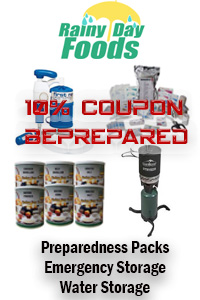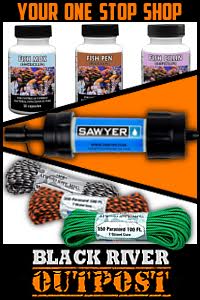Starting a food storage plan can be a bit overwhelming at first. Canned food, freeze dried, dehydrated, shelf life, rotation cycles and many other factors can be confusing at first. Quite often people simply do not know where to begin and they end up spinning their wheels or spending unnecessary money. Had they done their research it would have become clear that going to the store and spending $300 on canned foods probably is not the right way to begin. I know because that is how I started back in the day, and so I’m composing this post so you all do not make the same mistakes I once did. Needless to say if the S Hits The Fan anytime soon I’ll have plenty of Chef Boyardee, New Potatoes and Chicken Noodle Soup to go around.
So what should a good food storage plan look like? Initially the goal should be to start small, keeping in mind diversity and building slowly. I should add that in this post I will not address growing and canning your own food, that’s a whole post in itself. So before you start dropping cash on what you think you need it might help to know what you are buying (or think you should buy). I’ll post some info on a few of the most popular methods of food storage, hopefully it helps before you start swiping the debit card.
Store bought supplies.
Cans of soup, Ramen noodles, SPAM, canned fruit, tuna, potatoes, coffee and the list goes on. In most cases canned items bought in the store have a shelf life of 2 to 3 years. Thus it is important to buy food that you will have no problem eating because as the expiration date approaches you certainly do not want to just throw it away.
Pros: Store bought items have their benefits in that they are easily to find in your local supermarket, can be bought in bulk at places like Costco or Sams, and they are pretty much ready to eat (even cold).
Cons: Lots of space taken up in your storage area for what you get. Short shelf life, and expensive as compared to buying freeze dried/dehydrated meals in bulk.
Food Buckets of the basics.
Grains, legumes, oats, powdered milk to name a few examples of what comes in food buckets. You can buy these buckets, most of which have a shelf life of 20+ years, or buy the kits and do it yourself. A great way to store large quantities of the basics in your home.
Pros: Easy to store (can stack on top of each other), long shelf life, relatively inexpensive. If you do it yourself you can take pride in your efforts.
Cons: Heavy, and once you open the container you have about 6-12 months to use all the contents before they start to go bad.
MREs.
Meals Ready to Eat, a staple of the military and often used by hunters and outdoorsmen. MREs are high calorie by design and come with side dishes, desserts, and survival items like matches and toilet paper. Quite a few meal varities are available from various online retail outlets.
Pros: Easily transportable, lots of variety, no preparation or heating necessary (although heater packets are included).
Cons: Very expensive, a 1 year supply of MREs retails for $3900. High calorie meals mean that if you aren’t being physically active, you’ll get fat. Even in optimal conditions the shelf life is not that great (5-7 years depending on how stored).
Freeze Dried & Dehydrated.
I found a great article online which covers this topic, so instead of re-inventing the wheel I’ll just post it here. Lots of benefits of utilizing either one of these methods for your storage plan.
DEHYDRATED (aka AIR DRIED)
“Dehydrated” is a general designation for all foods that have had water removed. It includes a number of different products and dehydrating techniques. Methods of drying include:
- Air drying
- Spray drying
- Drum drying
- Belt drying
Most commonly, “dehydrated” is a term applied to vegetables, fruits, spices, and beans.
Spray dried items include milk powder, dairy and cheese powders, fruit powders, vegetable powders, egg powders, and oil powders.
Most dehydrated vegetables and fruits are dried at high temperatures for short periods of time.
Advantages of dehydration:
- Reduced weight
- Longer shelf life
- Lower cost
- No waste and compact
- A large, easy-to-use variety of foods
Disadvantages of dehydration:
- Many products – such as corn, peas, and green beans – have to be cooked to reconstitute, resulting in increased time and loss of nutritional value.
- High temperature drying of some items reduces nutritional value and taste.
- Texture of some products is altered from original.
FREEZE DRIED
Freeze drying is a specific technology that refers to foods which have been frozen and then dried at low temperatures in a vacuum chamber. The moisture is drawn from the chamber, leaving foods with a very low moisture content. This process is known as sublimation.
Advantages of freeze drying:
- Foods retain the highest nutritional value, taste, texture and appearance.
- Foods do not “shrivel up,” therefore retaining their original shape.
- Foods reconstitute easily in hot or cold water and can be eaten dry if necessary; no cooking is required in preparation.
- The only method used to dry meat products for long term shelf life.
- The chosen method of drying by the military, pharmaceutical companies, supplement manufacturers, and those concerned with nutrition and flavor.
- The lowest moisture content obtainable, resulting in long shelf stability.
- Excellent for fruits, vegetables, and meats.
- Very lightweight.
Disadvantages:
- Energy intensive- requires special equipment.
- Higher cost.
- Limited number of processors.
The bottom line.
Start small but remember to keep things diverse. Buy food that you will eat, not just food that you are buying because it’s on the clearance rack on some obscure website. Make sure to buy from reputable sources and store your food in a nice cool location if possible (basement). There is nothing wrong with buying a little bit of everything, you’ll never know when you need it. I can’t tell you how many times we have gone down into the basement to grab something because we were out of it upstairs in our pantry. I will tell you in all seriousness I truly believe the time to prepare is coming to a close. When it all goes down, you have what you have. Happy prepping!









Recent Comments